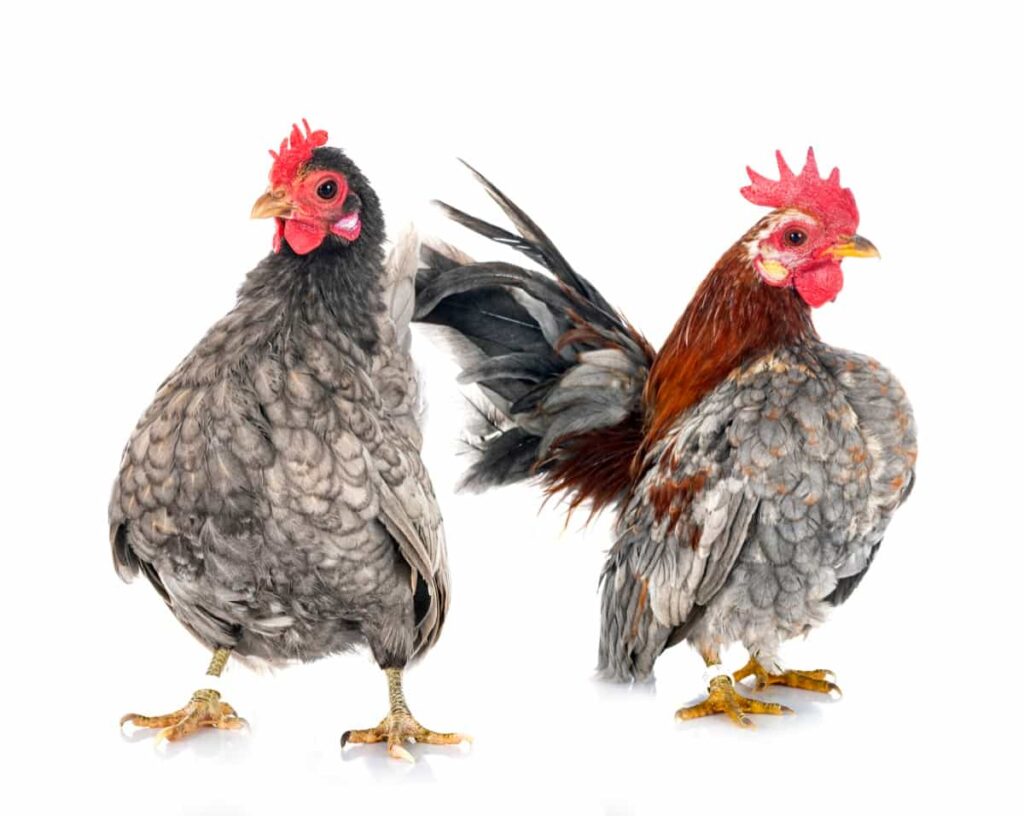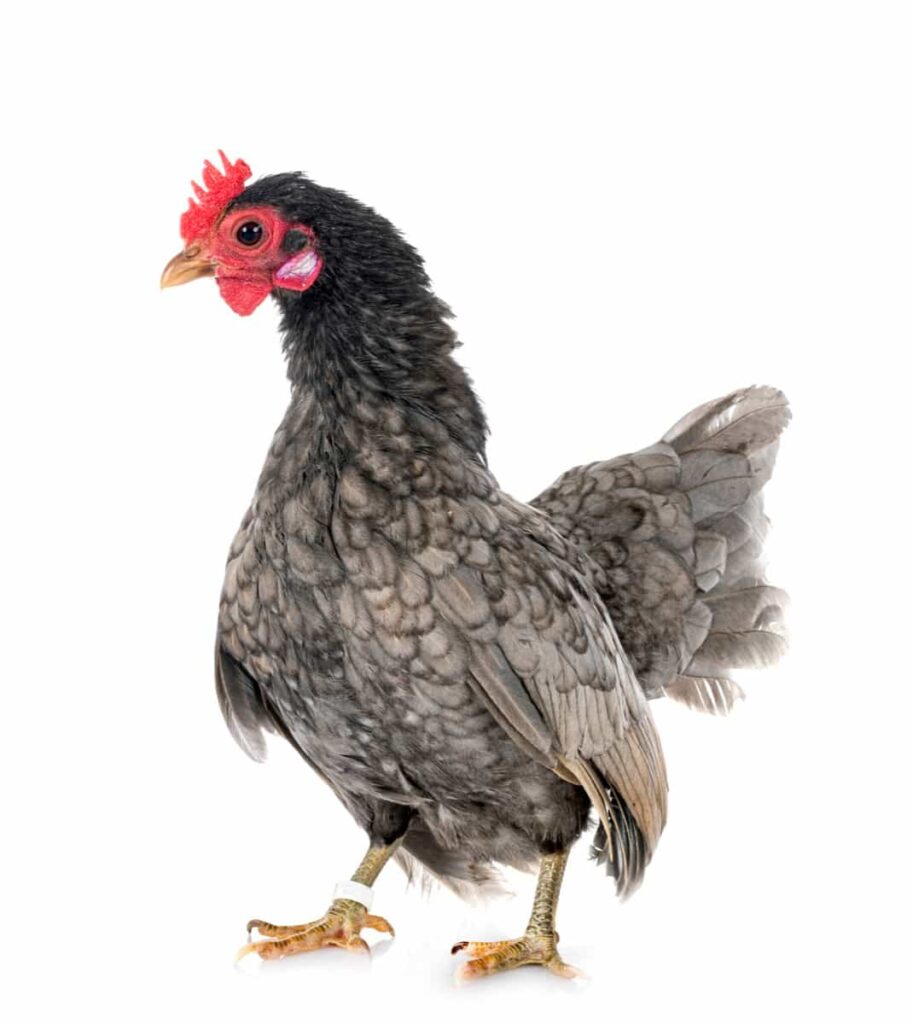Seramas can thrive in smaller coops or even indoor setups. This bantam breed is known for its small size and striking appearance. The Serama chicken breed offers numerous benefits for those looking to raise backyard poultry. The main advantage is their small size, making them ideal for urban or limited-space environments.

Serama Chicken Breed Profile and Characteristics
Origins and History of the Serama Chicken Breed
The origins and history of the Serama chicken breed can be traced back to Malaysia, where it was developed within the last 50 years. Seramas are also highly adaptable birds, able to tolerate a wide range of climates. Whether you live in a hot or cold region, these chickens can thrive with proper care and shelter.
Initially, the Serama breed gained popularity among poultry enthusiasts in Malaysia. However, its unique characteristics soon attracted attention worldwide. Today, you can find Seramas being raised not only in their country of origin but also in many other countries around the globe.
Physical Characteristics and Appearance
The Serama chicken breed is known for its small size and unique appearance. These tiny birds have compact bodies, short legs, and upright stances that give them a regal look. Their feathers come in a variety of colors and patterns, including black, white, red, blue, or splash. One distinctive feature of the Serama is their majestic tail feathers that are held high and proud. These long-tail plumes add to their overall elegance and charm.
With bright eyes and smooth beaks, Serama exudes an air of alertness. Their combs can range from single to rose varieties, depending on the individual bird. Additionally, they have feathered feet with tufts that further enhance their adorable appearance. Despite their size, males weigh up to 13 ounces while females weigh up to 8 ounces; these chickens possess a presence that demands attention. The combination of their petite size and striking physical attributes makes them truly captivating creatures in any flock or exhibition setting.
In case you missed it: Everything You Want to Know About Aseel Chicken Breed: From Egg Laying to Cockfighting

Behavior and Temperament
Serama chickens are known for their friendly and docile nature, making them a popular choice among chicken enthusiasts. They are often described as curious, intelligent, and social creatures. Despite their small size, the Seramas are confident and fearless. This makes them great for free-ranging in a backyard or garden setting. While they may be small in stature, Seramas display an impressive level of bravery when it comes to defending themselves against potential predators. Another interesting aspect of Serama’s behavior is their tendency to perch on high objects such as tree branches or fences.
Egg Laying and Breeding
These petite birds may be small in size, but they make up for it with their impressive productivity. On average, Serama hens will lay about four eggs per week. This means you can expect Serama egg production to be around 200 to 208 eggs from each hen annually. While this might not match the output of larger chicken breeds, it’s still quite respectable, considering their diminutive stature.
Breeding Serama chickens is an enjoyable endeavor for many poultry enthusiasts. Their compact size makes chickens easy to handle during mating and incubation processes. Seramas are known for being attentive parents who take great care of their baby chickens once they hatch. This makes the breeding process even more rewarding as you witness the growth and development of these adorable little creatures.
Health and Lifespan
The Serama chicken breed is known to be relatively healthy and can live between 7 and 10 years old. With proper care and maintenance, these chickens can lead long and fulfilling lives as pets or show birds. To ensure the health of your Serama chickens, it is important to provide them with a balanced diet consisting of high-quality chicken feed supplemented with fresh fruits, vegetables, and grains. Access to clean water at all times is crucial for their well-being.
Regular health check-ups by a veterinarian familiar with poultry can help detect any potential issues early on. Vaccinations against common diseases such as Marek’s disease are also recommended to prevent outbreaks within your flock. In terms of lifespan, factors such as genetics, diet, environment, and overall care play significant roles. By providing a comfortable living space that includes ample ventilation and protection from harsh weather conditions, you can help increase the chances of your Serama chickens living longer lives.
In case you missed it: 18 Best Egg Laying Chickens: Foods that Increase Egg Production, Egg Laying Frequency, and Egg Laying Chart

Serama Chicken Diet and Nutrition
The diet and nutrition of Serama chickens play a crucial role in their overall health. A balanced diet for Serama chickens consists of high-quality chicken feed supplemented with fresh fruits, vegetables, and grains. It’s important to provide them with a mix of nutrients like protein, carbohydrates, vitamins, and minerals. When it comes to feeding Serama chickens, portion control is key. Since they are small in size compared to other breeds, it’s essential not to overfeed them.
This can affect health issues down the line. Additionally, offering clean water at all times is vital for their hydration needs. Make sure the water container is accessible and regularly cleaned to prevent any bacterial growth or contamination. To ensure proper nutrition intake for your Seramas, consult with an animal veterinarian or poultry expert who can guide you on the dietary requirements based on factors like weight and reproductive status.
Serama Chicken Care and Maintenance
Serama chicken care and maintenance is essential to ensure the health of these unique bantam chickens. Providing a suitable living space is crucial. Serama do well in small coops or cages, as they are tiny birds that don’t require a lot of space. However, it’s important to ensure proper ventilation and cleanliness in their enclosure.
Maintaining good hygiene practices is another key aspect of caring for Serama chickens. Monitoring their health regularly is crucial. Check for illness signs, such as lethargy, decreased appetite, abnormal droppings, or respiratory issues. If you notice concerns, consult a veterinarian experienced in avian care. Providing them with adequate socialization and stimulation can contribute to their overall well-being.
Serama Chicken Breed Popularity and Recognition
Serama chickens have gained significant popularity recently due to their unique characteristics and appealing appearance. Serama comes in various colors and feather patterns, including black, white, red, and even splash. In addition to being visually appealing, Serama also possesses friendly and gentle temperaments. They are known for being docile birds that can be easily handled and make great pets for families with children or individuals looking for companionship in their backyard flock.
The recognition of Serama chickens as a distinct breed has led to dedicated shows and competitions specifically focused on this breed. In these events, breeders showcase their prized birds’ beauty while judges carefully assess conformation according to specific standards set by recognized organizations such as the American Bantam Association (ABA).
Raising Serama Chickens as Pets
These charming bantam birds not only make excellent backyard additions but also provide endless entertainment and companionship. Serama are known for their friendly and sociable nature. They quickly become accustomed to human interaction and are trained to perform tricks or walk on a leash. Their small size makes them perfect for individuals with limited space, such as those living in apartments or urban areas.
In case you missed it: 12 Best Chicken Pluckers: Defeathering Machine Price List Included

As pets, Serama chickens require minimal maintenance compared to traditional farm breeds. With proper care, they can live up to 10 years, providing years of joy and companionship. Regular feeding, fresh water supply, shelter from extreme temperatures, along with occasional health check-ups will ensure their well-being. Not only are Serama adorable pets, but they also offer the added benefit of egg production.
Frequently Asked Questions (FAQ) on Serama Chickens
What Kind of Care Do Serama Chickens Require?
Like any other chicken breed, Serama needs proper nutrition, clean water, and shelter. They enjoy free-ranging, but you must ensure their safety from predators, as they are small and more vulnerable.
Can Serama Chickens Tolerate Different Climates?
Seramas are fairly adaptable but prefer warmer temperatures; however, they can handle mild cold weather with adequate protection.
Do Serama Chickens Require Any Specific Diet?
Like all chickens, a balanced diet consisting of high-quality poultry feed supplemented with fresh fruits and vegetables will keep them healthy.
Conclusion
The Serama chicken is a small and elegant bantam breed that hails from Malaysia. This unique chicken breed has quickly gained popularity among poultry enthusiasts worldwide. They are known for being friendly and sociable with humans, making them ideal pets for those looking for feathered companionship.
- Management Pests and Diseases in Your Cotton Field
- Sheep Farming Business Plan for Beginners
- Aquaponic Farming at Home: A Step-By-Step Guide
- Profitable Village Farming Business Ideas in 2024
- High-Yield Aquaculture: Fast-Growing Fish for Farming
- Effective Fish Pond Construction Techniques for Beginners
- Irrigation and Water Management in Pineapple Farming
- Blossom to Harvest: Mastering Flowering and Pollination in Papaya Farming
- Pig Fattening Essentials: From Selection to Sale for Beginners
